Words: Séan Hendley
Images: Beam Productions


So! This was a bit of the “worst kept secret” scenario at the recent 2023 Honda XL750 Transalp launch, (read the full feature on www.dirtandtrail.co.za). All the dealers had been posting pics of the Hornet all over social media, then the program arrived on our email and it included a quick stop at Redstar Raceway. Suddenly my overnight bag got a lot bigger when I squeezed in my road lid and leather jacket. It was a very clever bit of marketing by Riaan and the team from Honda Wing SA. The Hornet shares a motor, chassis, exhaust and several other components with the new Transalp and this gave us an opportunity to feel the differences and similarities between the two machines back to back. Naturally we also hammered the Transalps around the track too, just to be sure. Dammmm… I was looking forward to riding the new CB750 Hornet, even for half an hour around the RSR short circuit.

A bit of history on the Hornet
Originally with a liquid cooled, in-line 4 cylinder 599cc power plant, it was introduced to the market in 1998. Featuring a mono shock and single out back and old school telescopic forks in front with dual rotors. 2000 saw Honda change the front wheel from a 16 inch to a 17 inch unit improving cornering stability, as well as upgrading the brakes for better stopping performance. 2003 came along and the Hornet got a bigger fuel tank and a modern facelift. 2005 the instrument cluster was modernised and more importantly the front telescopic forks were swapped out for upside down or inverted forks further improving cornering stability and road holding. 2007 saw the biggest changes up to this point with a new motor that was essentially a slightly tamed down CBR600RR unit, producing 102bhp and 76kW. The 2011 model was as close as dammit to being a naked CBR600F sport bike as they shared a lot of the same components like the swingarm, front suspension, chassis and motor – this was one wicked little machine. Oh! It also got a LCD screen. 2013 saw an all new model CB650F Hornet introduced at EICMA, a proper hooligan machine, we almost acquired one here at the office a year or two back. And now we have another completely different set up and it does seem mighty fine.


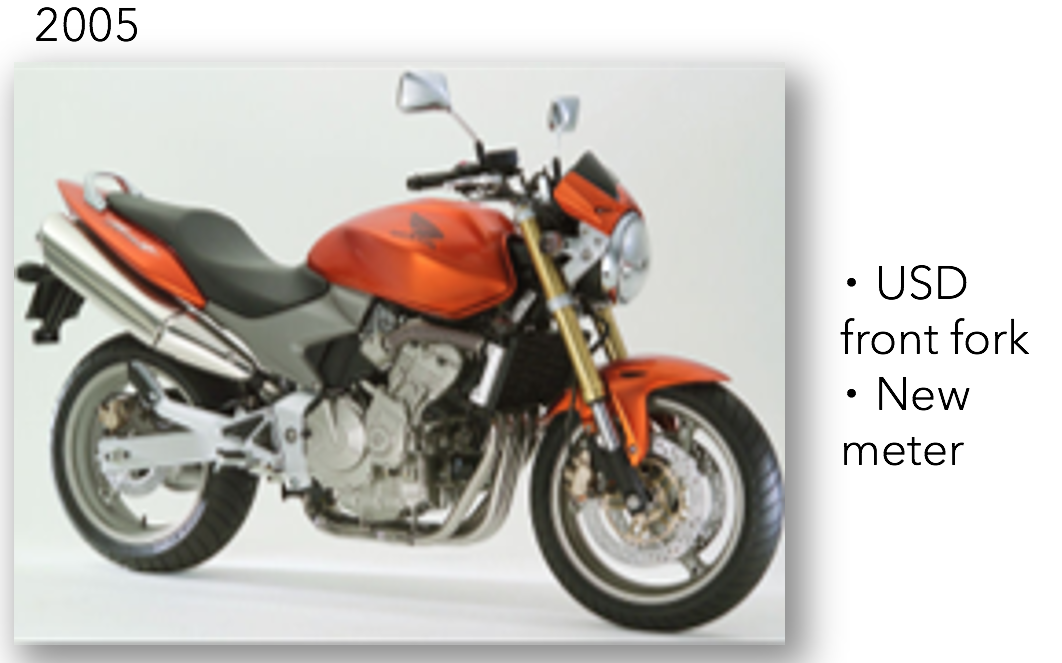


2023 has seen some very significant changes, the most important being the reduction to 2 cylinders from the original 4. The engine is now a fuel an electronic injected, parallel twin on a 270 ͦ crank producing 90hp and 67.5kW at 9,500rpm and 75 Nm at 7,250 rpm mated to a 6 speed manual box and assisted slipper clutch. The front suspension is an inverted 41mm top shelf SHOWA set up with 130mm of travel and the rear is a mono shock mounted to a Pro-Link swing arm with 150mm travel. Twin 296mm rotors and 4 pot Nissin callipers take care of the stopping duties up front with a single 240mm disc and single pot Nissin calliper taking care of the rear all on a 2 channel ABS system.
The 5Y spoke cast aluminium wheels are shod in 120/70-17 and 160/60-17 Michelin rubber. And it is not a bulky bike at all with a length of 2,090mm, a width of 780mm and a height of 1,085mm and a mere 795mm seat height. Tipping the scales at 190 kg’s with a full 15,2 litres of fuel on board, it is also quite light. The 1,420mm wheelbase with a 25 ͦ rake on the forks and 99mm trail does make it a lot of fun to ride around the track.
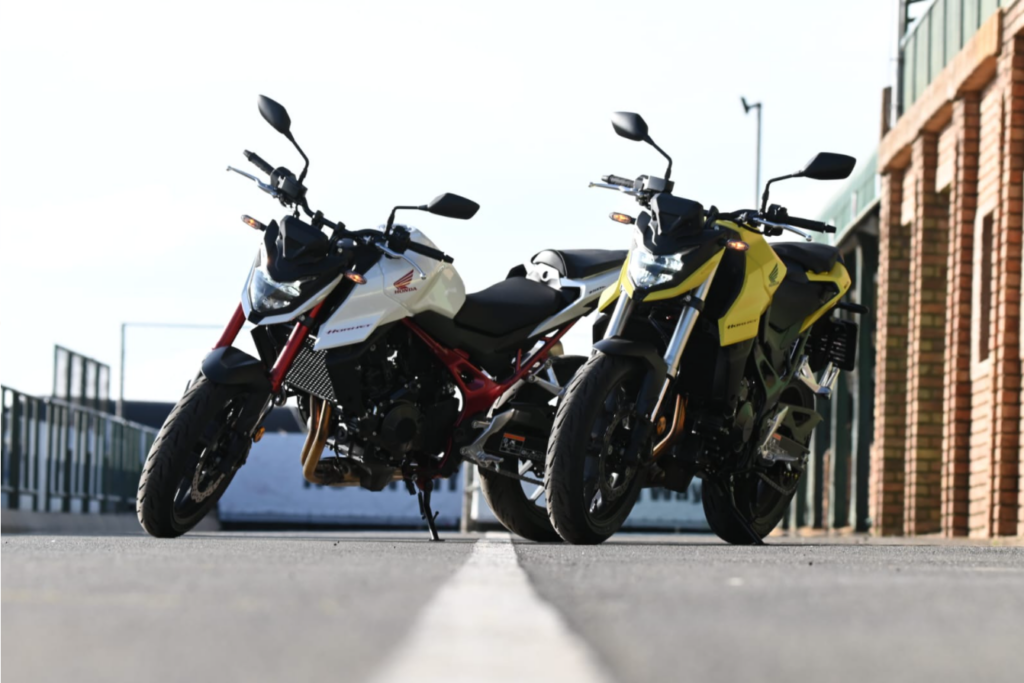
The electronics package is not too dissimilar to that of the Transalp, featuring ‘Sport’, ‘Standard’, ‘Rain’ and ‘User’, with the ‘User’ mode having all of the adjustable settings. We were at a race track, so Sport and User were the only two in operation. It has a really easy to use switch cluster and great TFT screen, essentially the same as the XL750. In fact, barring the suspension, ‘Gravel’ mode, tyres, gear lever mounting and body kit they are really the same bike. Quite clever when it comes to parts stocking, technician training and production costs.
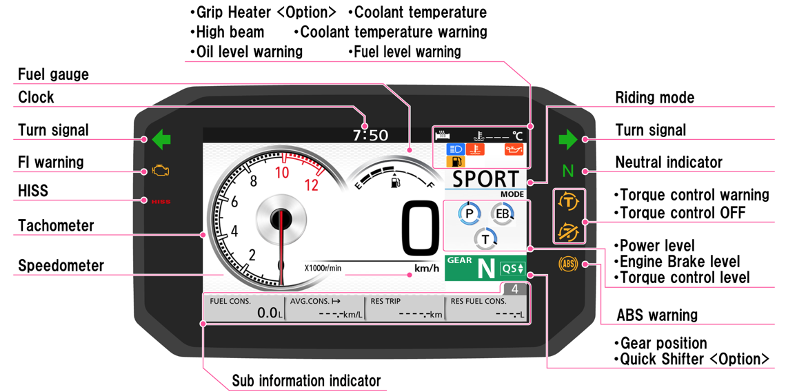

What’s it like to ride? Well, 40 or minutes on the track is possibly not quite enough to give a full ride review but we can tell you this: It is a perky little machine.
We really expected to feel a bit disappointed by the reduction in cylinders and subsequent reduction in power… but whilst it is different to the traditional 4 cylinder, Honda seems to have nailed it.
It is neither a small bike nor is it a big bike and I did manage to fit my 2m, 115kg chassis quite comfortably onto it without any hassle. The riding position is more forward biassed and a bit sporty, but not overly aggressive as to be cramped or uncomfortable. Once again, Honda has laid everything out where you would instinctively expect to find it, that is excluding the flicker switch of course – why the heck is the hooter button placed where you would naturally look for the flickers? And the flicker sort of tacked onto the bottom of the cluster like an afterthought? Anyway the rest of the layout is tip top.
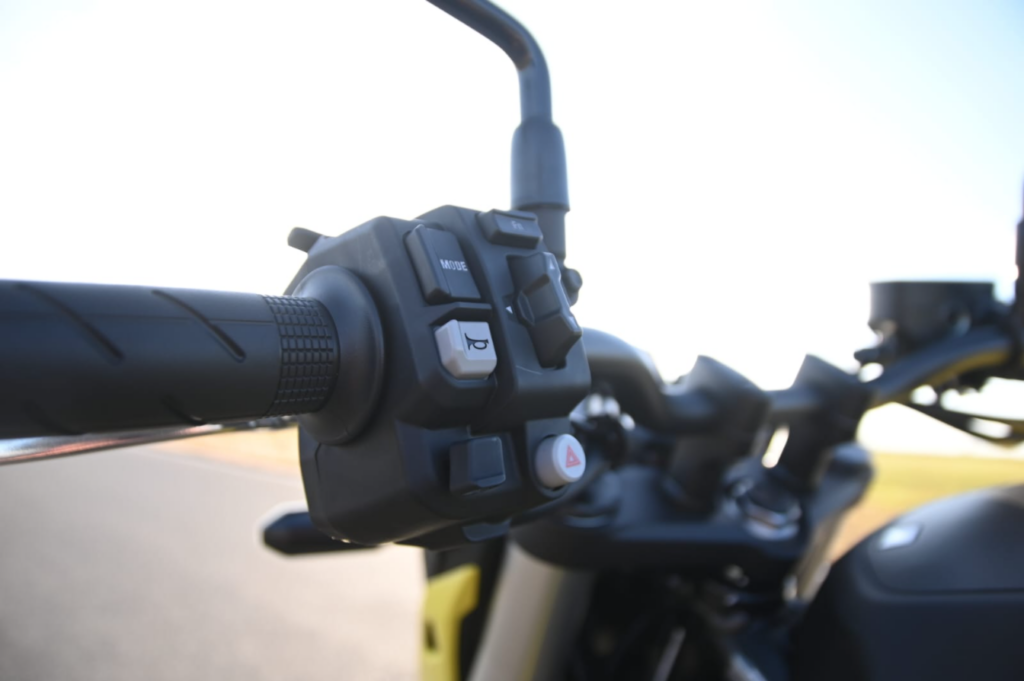
Dropping into the bike, it just feels right, flicking the starter switch adjusting the electronics to full ‘Hooligan’ and taking a lap or two to warm up the tyre and familiarise myself with the clockwise rotation of the track, it was time to try to drag the pegs on the deck. Hitting the gas hard, the 755cc mill spins up and kicks out the power pretty quickly. The gearbox is smooth on both up and down shifts, (no quick shifter), but fanning the clutch and keeping the throttle pinned on up shifts does get the front wheel trying to grab at the sky a bit.
That might partly be my weight on the rear shock combined with the 75 nm’s of torques at full whack. Flicking the bike over between corners in quick succession was easy with plenty of room to move my long body over the bike swiftly. The motor pulls like a steam engine through the gears and picks up speed very rapidly, as the 100m board flashes by grabbing the hooks and stomping on the back pedal has the tyre squealing their protest and the emergency hazard lights going nuts tilting into the next bend. Clip the apex, hang on the gas and try keep the front on the tarmac while abusing the clutch and gearbox and the little Hornet happily obliges with with a throaty gurgle from the induction – imagine Brian Johnson belting out ‘Back in Black’ and you’ll get an idea of the sound.

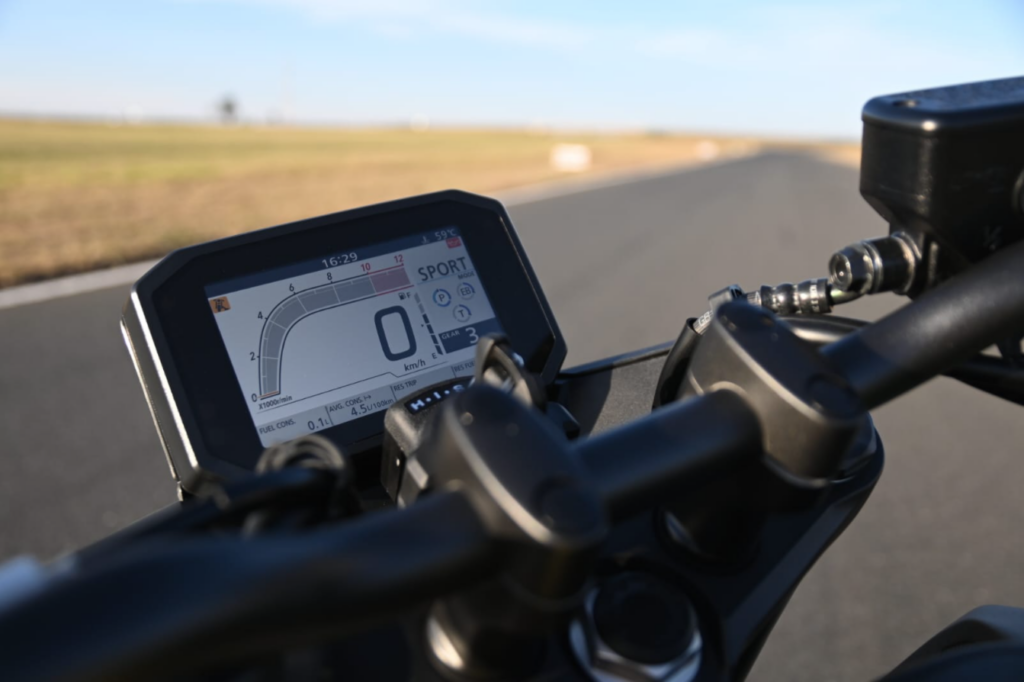



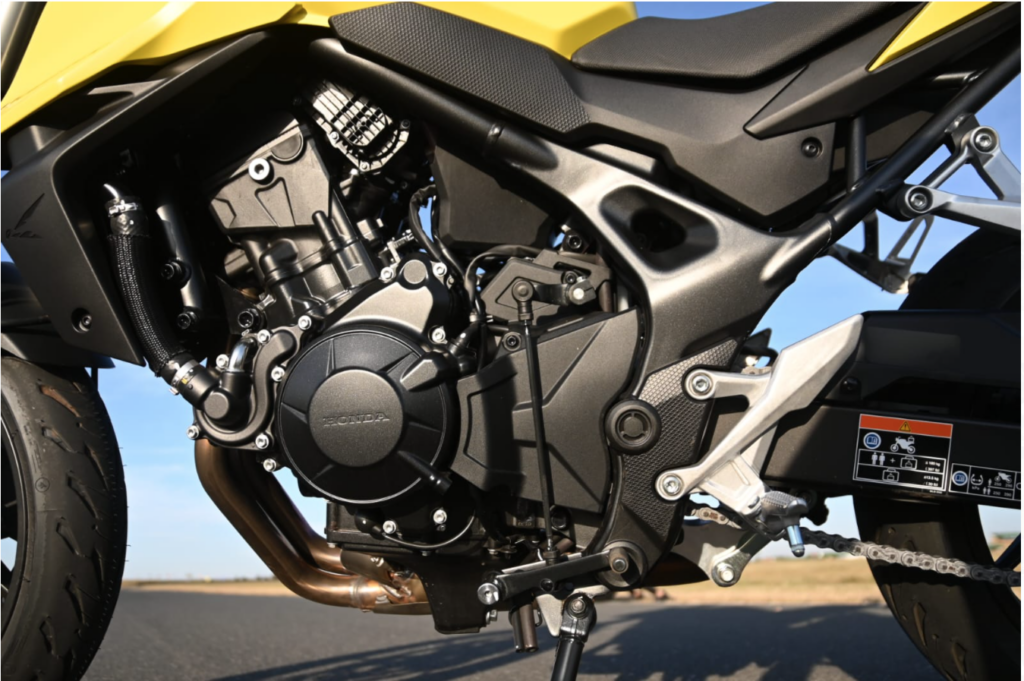

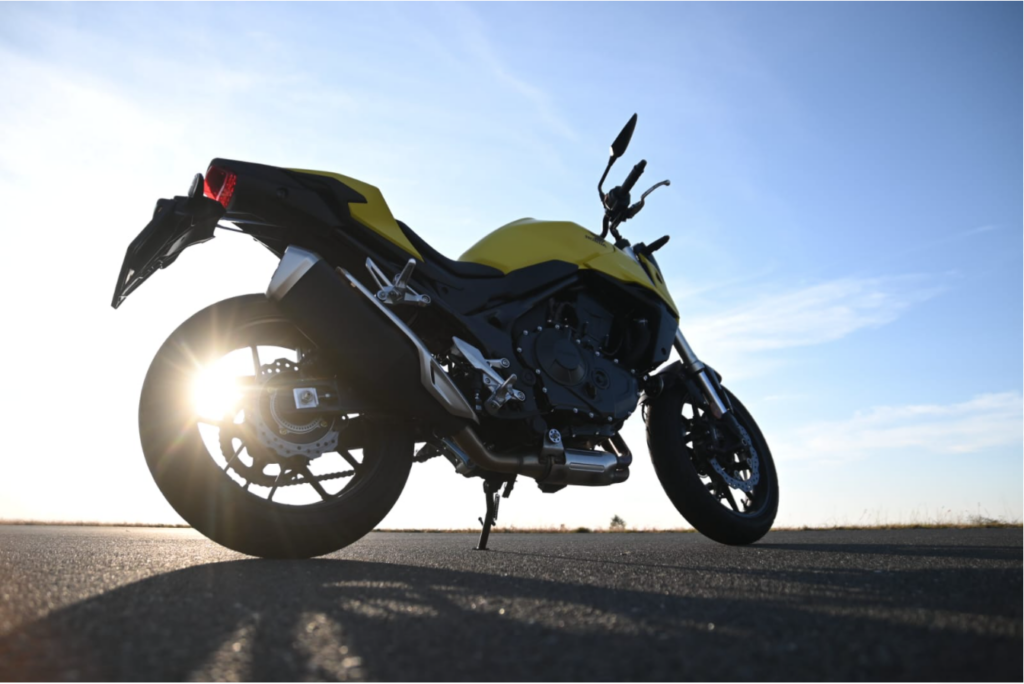
What a well mannered and willing machine this is. But wait! What’s it like on the road?!?! I hear you ask. Dunno, these bikes are still being homologated and therefore not road legal in SA yet and as yet not quite available to buy, but they will be very soon. As with the Transalp, there will be a whole host of genuine accessories available as single items or as package deals – chat to your local Honda wing dealer. We certainly look forward to spending a lot more time getting acquainted with the Hornet.

Capacity | 755cc |
Bore x Stroke | 87 x 63.5mm |
Engine layout | Parallel twin, liquid-cooled |
Engine details | SOHC, Unicam, 270-degree crank, ride-by-wire |
Power | 67.5kW/ 90.5bhp @ 9500 rpm |
Torque | 75Nm / 55.3ft lbs @ 7250rpm |
Top speed | 203kmh |
Transmission | 6-speed manual |
Average fuel consumption | 4.348 l/100km |
Tank size | 15.2 litres |
Max range to empty | Claimed: 335km |
Rider aids | HSTC (3 levels), ABS, 4 riding modes, 3 power levels, 3 engine braking levels |
Frame | Steel diamond |
Front suspension | Showa 41mm SFF-BP USD forks |
Front suspension adjustment | None |
Rear suspension | Showa monoshock |
Rear suspension adjustment | Preload |
Front brake | Nissin 4-piston calipers, 296mm discs (x2) |
Rear brake | 240mm disc, single-piston caliper |
Front wheel / tyre | 120/70-ZR17, cast alloy |
Rear wheel / tyre | 160/60-ZR17, cast alloy |
Dimensions | (2090mm x 780mm x 1085mm) |
Wheelbase | 1420mm |
Seat height | 795mm |
Ground clearance | 140mm |
Weight | 190kg (wet) |





